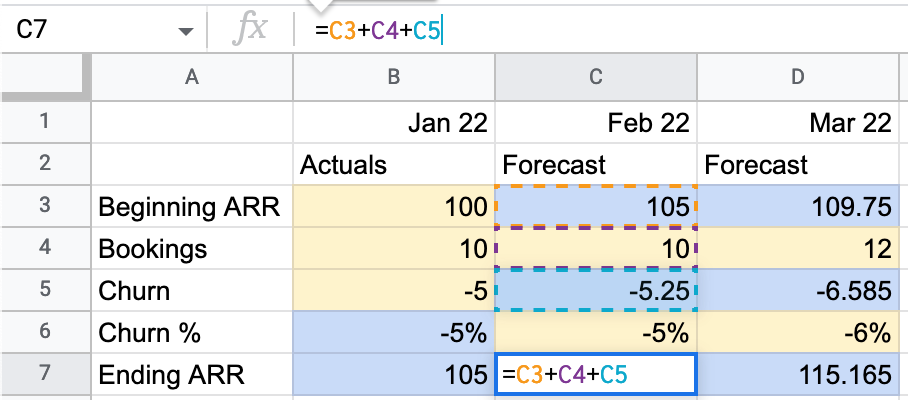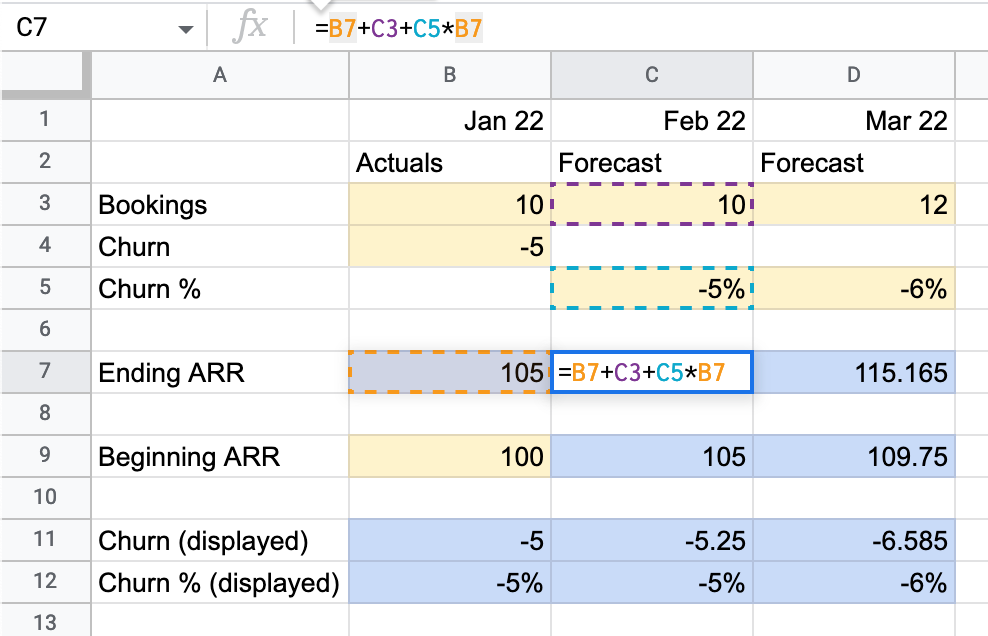I am trying to create something in Pigment similar to the simple excel model shown below. The key piece I cannot currently achieve is making the Churn amount be calculated as: Beginning ARR * a percentage driver.
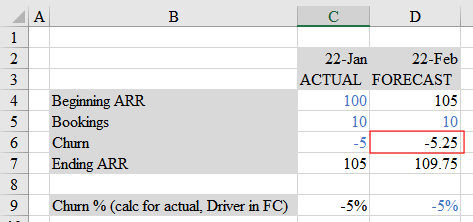
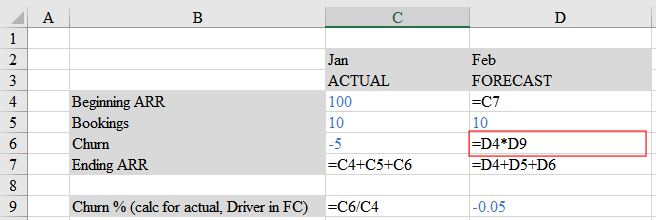
When trying to do the equivalent in Pigment, I get a circular error.
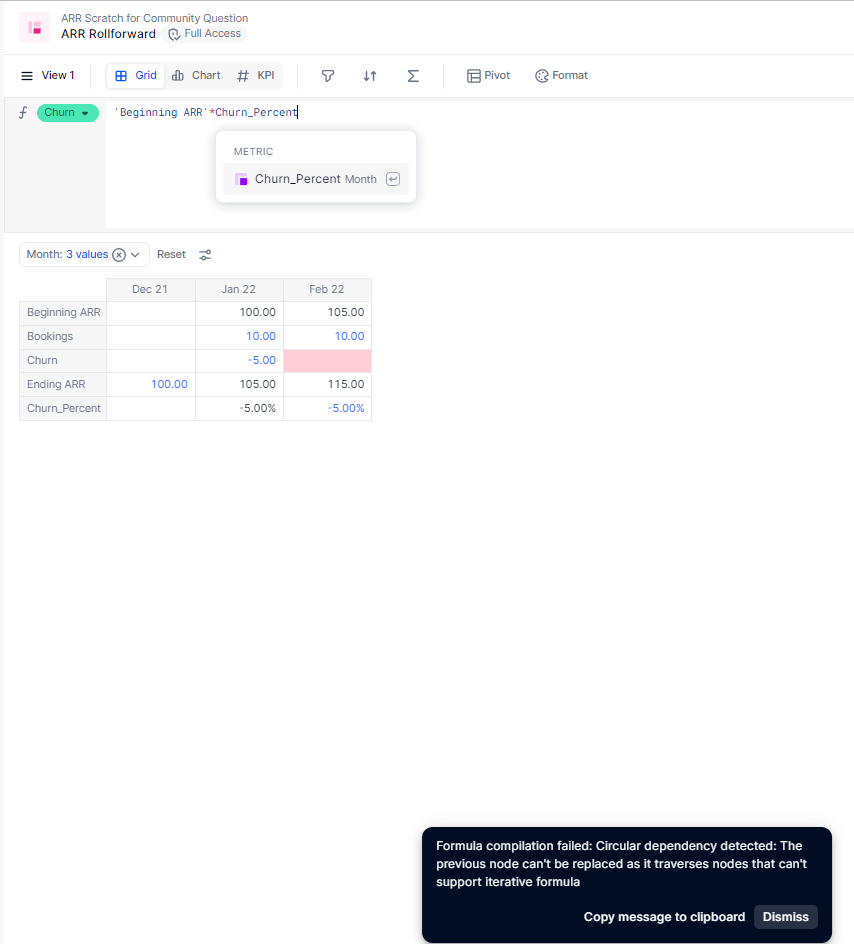
For the sake of the example, I’m assuming Jan is actuals and Feb is forecast. For reference, my Pigment formulas are as follows:
- Beginning ARR: 'Ending ARR'[select: Month-1]. I have also gotten the same result with PREVIOUS(Month)+Bookings[select: Month-1]+Churn[select: Month-1]
- Bookings: no formulas - direct entry
- Churn: attempted formula was Beginning ARR * Churn_Percent, but resulted in circular error
- Ending ARR: previous(Month)+Bookings+Churn
- Churn_Percent: Churn/'Beginning ARR'. I allowed overrides on this metric to be used as a driver in forecast months
Is there any workaround for this?
Best answer by francois
View original






